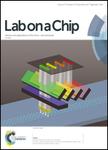版权所有:内蒙古大学图书馆 技术提供:维普资讯• 智图
内蒙古自治区呼和浩特市赛罕区大学西街235号 邮编: 010021

作者机构:Neuroscience Research Institute Department of Materials Department of Physics School of Science and Technology Molecular Imaging Program at Stanford Department of Mechanical Engineering
出 版 物:《LAB ON A CHIP》 (微型实验室:化学与生物学的微型化)
年 卷 期:2009年第9卷第24期
页 面:3604-3604页
核心收录:
学科分类:0710[理学-生物学] 07[理学] 0804[工学-仪器科学与技术] 0805[工学-材料科学与工程(可授工学、理学学位)] 0703[理学-化学]
基 金:Office of Naval Research [N00014-08-1-0469] National Institutes of Health [447850-24360] Armed Forces Institute for Regenerative Medicine California Institute of Regenerative Medicine (CIRM) ARO Institute for Collaborative Biotechnologies [DAAD1903D004]
主 题:Magnetic separators accuracy control Affinity Reagent Phage display Peptides directed evolution Magnetic force Microfluidics Microfluidic Devices Washing
摘 要:We report the utilization of microfluidic technology to phage selection and demonstrate that accurate control of washing stringency in our microfluidic magnetic separator (MMS) directly impacts the diversity of isolated peptide sequences. Reproducible generation of magnetic and fluidic forces allows controlled washing conditions that enable rapid convergence of selected peptide sequences. These findings may provide a foundation for the development of automated microsystems for rapid in vitrodirected evolution of affinity reagents. [ABSTRACT FROM AUTHOR]